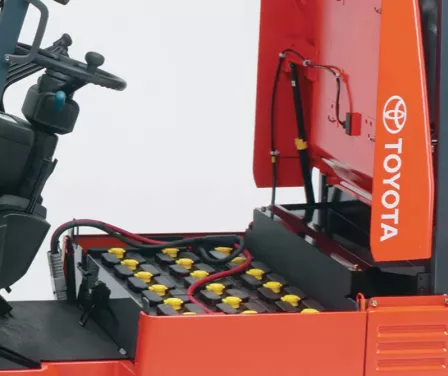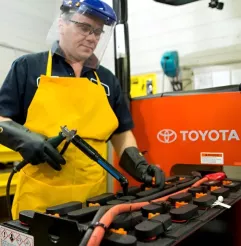Rent
ProLift offers daily, weekly, and monthly rentals. Find the right equipment for maximum productivity and safety.
Let us know how we can assist you! A ProLift specialist will connect with you to help with your material handling needs.

Choosing the right forklift battery charger is crucial for maintaining efficiency and prolonging battery life. Explore the top 10 considerations to keep in mind when selecting a charger, from compatibility to charging speed, and ensure you're making the best investment for your operation.

As electric forklifts become more popular, selecting the best electric forklift battery charger is increasingly critical for maintaining a healthy operation. It’s equally important the forklift battery has enough charge at the start of each work shift, and throughout, to meet the demands of your company’s production schedule.
Source the forklift battery from the same supplier as the charger. During a battery malfunction, the source of the problem is not always clear. Whether the battery or charger is the problem, sourcing both items from the same supplier ensures their technical support.
When evaluating the total cost of a forklift battery charger, remember that most chargers are sold without the cables needed to connect to an electrical supply. Be sure to account for the cost of these cables, as well as the expense of hiring an electrician to install the charger, when calculating the overall investment.
Check your electrical supply. It should have capacity to handle the normal operating amperage draw as well as the start-up amperage draw. When a forklift battery charger powers an electric forklift motor which initially starts during the charge cycle, it draws a large amount of current. If the electrical service is inadequate, other electrical products in your facility can be affected.
Pay close attention to the output cables. While these cables, which connect the charger to the forklift, are typically included with the forklift battery charger, they may not be long enough to reach the charging location. Ensure the charger and its output cables are properly positioned off the ground to prevent potential damage from forklift traffic.
Match the charger to the forklift battery to prevent irreversible damage to the battery. When replacing a forklift battery for your current forklift, confirm the battery technician adjusts the charger to match the characteristics of the replacement battery. Skipping this step will likely shorten the life of the battery and/or limit the charge that can be extracted due to chronic under- or overcharging.

Along with forklifts, ProLift provides industrial battery maintenance programs. Trust ProLift to help extend the life of your batteries and keep your equipment running efficiently to meet your production goals.
Match the output voltage of the charger to the voltage of the battery and the forklift’s electrical system. This will avoid battery damage.
Confirm the charger is compatible. It should match the connector on the battery and its forklift.
Purchase an auto start/auto stop charger. It is designed to stop the charging process when the battery is fully charged.
Look for a charger that monitors battery temperature and adjusts the charge rate when the temperature falls outside of the normal operating range. High battery temperatures will have a direct impact on the life of a forklift battery.
Choose a forklift battery charger with the ability to equalize the battery. Equalization is needed to keep a battery from accumulating excessive lead sulfate on the plates, which is known to result in a reduction of battery capacity and overall life.
ProLift is your full-service industrial battery partner. Learn more about our capabilities for batteries, chargers, accessories and maintenance.
As a full-service material handling dealer, ProLift can help you with questions and solutions for your equipment, service, parts and more. Tell us how we can help.

Let us know how we can assist you! A ProLift specialist will connect with you to help with your material handling needs.
